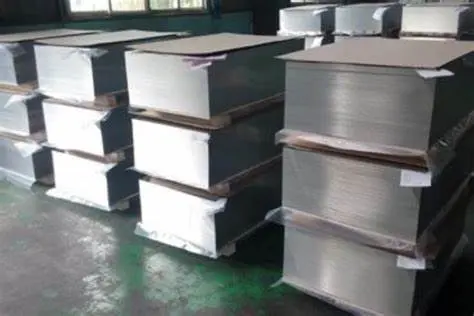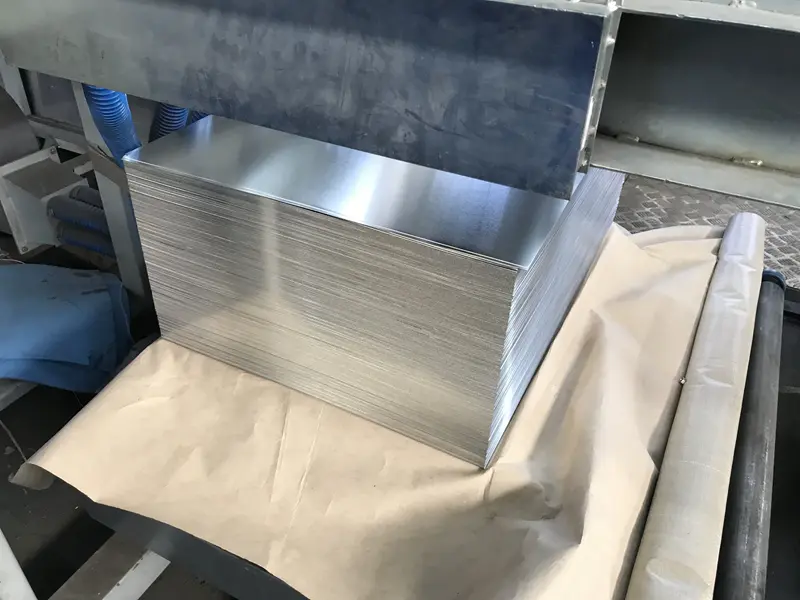Learn about tinned steel sheets
Tinplated steel plate, commonly known as tinplate (SPTE), refers to a cold-rolled thin steel plate coated with a thin layer of metal tin on the surface.
It has a certain strength and hardness, good formability and easy welding, the tin layer is non-toxic and tasteless, and the surface is bright, and the tin mainly plays a role in preventing corrosion and rust. According to the production process, it is divided into hot-dip tin-plated steel plate and electro-tinned steel plate. Commonly used cans, bottles, or beverage cans are made of tinplate.


Tinned steel plate (commonly known as tinplate) is a steel product with a thin steel plate that can be stamped as the matrix, tin plated on its surface, and has multiple layers of protective film (layer). It has the characteristics of corrosion resistance, non-toxic, odorless, surface gloss, light weight, high strength (relative to paper, wood, composite materials), easy to paint, easy to weld and process, and strong adaptability to ambient temperature. As a result, more than 70% of the total production of tinned Steel Sheets is used for food and beverage packaging. In addition, it is also the packaging and raw material shaking of chemical and pharmaceutical, electromechanical, hardware, telecommunication instruments and other industries.
The main feature of tinned steel plate is that the tin plating layer has the dual properties of electrochemical cathode and anodic protection, that is, in the inner wall of food cans filled with complex mixtures (or weak acid lytes) and has a certain vacuum, the potential is lower than that of the base material iron, tin is the anode, and its dissolution makes the iron be protected, and the dissolved amount of tin is basically harmless to the human body during the validity period of food cans; The outer wall is in the atmospheric lysate, and the tin plating layer is in a cathodic protection state, which has sufficient chemical stability, which is incomparable to other canning materials
Classify:
1. Equal thickness tin plate: cold-rolled electroplated tin plate with the same amount of tin plating on both sides.
2. Differential thickness tin plate: cold-rolled electroplated tin plate with different tin plating amounts on both sides.
3. First-class tin plate: the electroplated tin plate that has been inspected online is suitable for conventional painting and printing on the surface of the entire steel plate under normal storage conditions, and shall not have the following defects: (1) pinholes that penetrate the thickness of the steel plate; (2) The thickness exceeds the deviation specified in the standard; (3) Surface defects such as scars, pits, wrinkles, rust and other defects that are affected by use; (4) Shape defects that have an impact on use.
4. Secondary tinplate: The surface quality is lower than that of the primary tinplate, and small area of obvious surface defects or shape defects such as inclusions, wrinkles, scratches, oil stains, indentations, burrs, and burning points are allowed, and it is not guaranteed that the entire steel plate can be routinely painted and printed.
Tin plate, commonly known as tinplate, is one of the most common forms of application and is used to make packaging containers for a variety of food and beverages, a material that not only protects food from external contamination but also extends its shelf life. In addition, tin plating is also used to make kitchen utensils such as knives and forks, baking trays, etc., which need to be non-stick and easy to clean. In the chemical industry, tinned stainleSs Steel is used in the manufacture of various equipment and pipes to improve their corrosion resistance and extend their service life. This helps to ensure the safe and efficient operation of chemical production.















